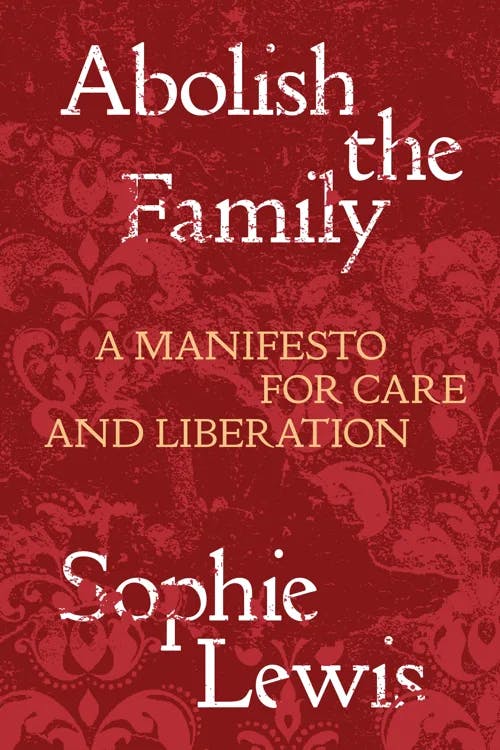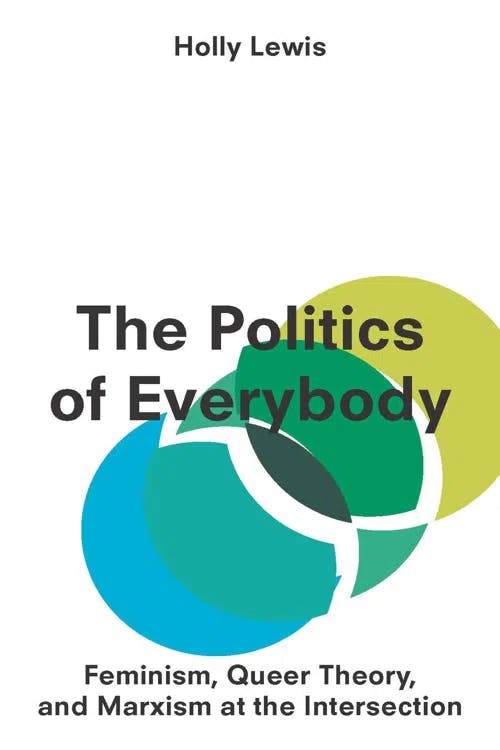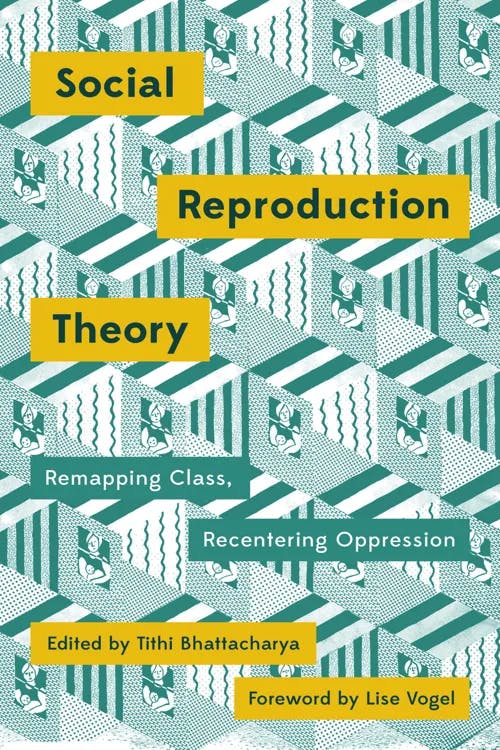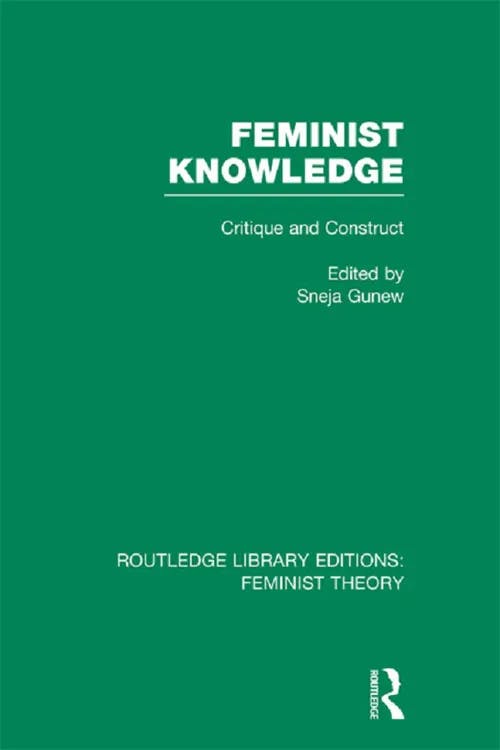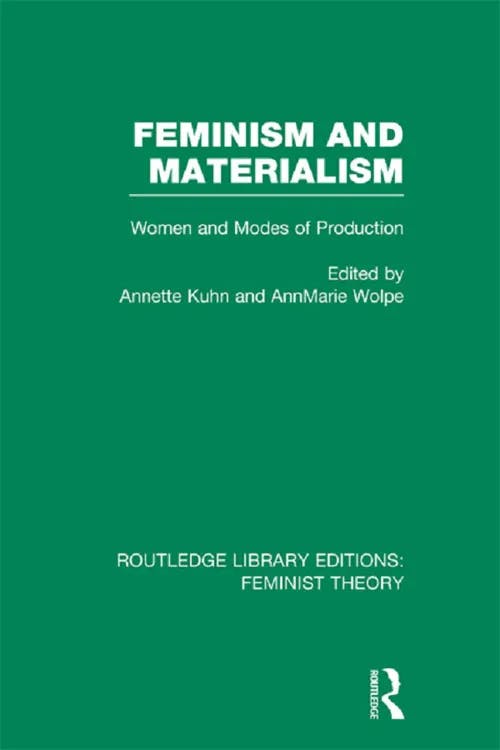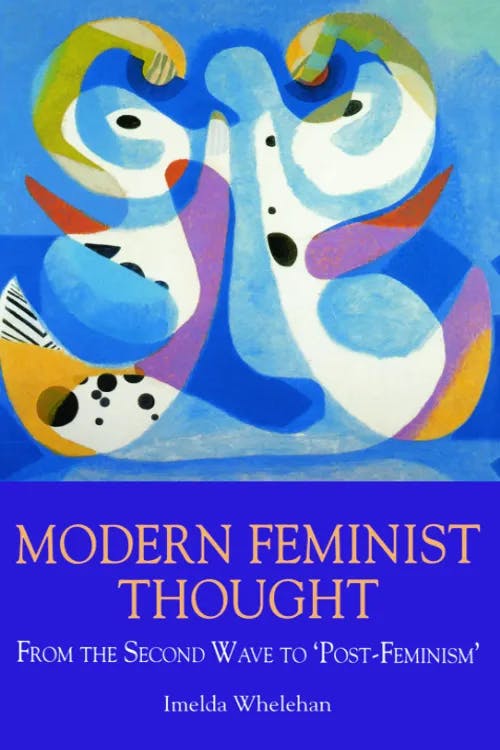What is Marxist Feminism?
PhD, English Literature (Lancaster University)
Date Published: 06.04.2023,
Last Updated: 05.02.2024
Share this article
Defining marxist feminism
Marxist feminism is a branch of feminism which, by incorporating the work of Karl Marx, examines how women are exploited through capitalism. As Heidi I. Hartmann explains,
Women’s exclusion from the wage labor force has been caused primarily by capitalism, because capitalism both creates wage work outside the home and requires women to work in the home in order to reproduce wage workers for the capitalist system. Women reproduce the labor force, provide psychological nurturance for workers, and provide an island of intimacy in a sea of alienation. (“The Unhappy Marriage of Feminism and Marxism” in Radical Political Economy, 2015)
Edited by Victor D. Lippit
Women’s exclusion from the wage labor force has been caused primarily by capitalism, because capitalism both creates wage work outside the home and requires women to work in the home in order to reproduce wage workers for the capitalist system. Women reproduce the labor force, provide psychological nurturance for workers, and provide an island of intimacy in a sea of alienation. (“The Unhappy Marriage of Feminism and Marxism” in Radical Political Economy, 2015)
Marxist feminists, therefore, believe that women’s liberation can be achieved through the removal of capitalist systems which contribute to women’s unpaid domestic labor and keep them in a state of financial dependence on men. In addition, many Marxist feminists believe that the dismantling of the nuclear family, or at least an overturning of expected gender roles, is crucial for fighting both gender-based and capitalist exploitation. Pat Parker, speaking on behalf of The Black Women’s Revolutionary Council in 1980, called the nuclear family “the basic unit of capitalism” and advocated for its abolition:
As long as women are bound by the nuclear family structure we cannot effectively move toward revolution. And if women don’t move, it will not happen. (Pat Barker, cited by Sophie Lewis in Abolish the Family, 2022)
Sophie Lewis
As long as women are bound by the nuclear family structure we cannot effectively move toward revolution. And if women don’t move, it will not happen. (Pat Barker, cited by Sophie Lewis in Abolish the Family, 2022)
The family unit is seen as an ideological tool of gender oppression for Marxist feminists, designed to support capitalism in the following ways:
- Women are responsible for reproducing and socializing the next generation of laborers, known as social reproduction theory.
- Women undertake unpaid domestic labor so that men can serve their economic purpose.
- Women can be used as a cheap labor reserve, particularly during times of crisis.
The following sections will explore each of these areas of Marxist feminism.
Social reproduction theory
Social reproduction theory, a core framework for Marxist feminists, comes from Marx’s discussion of social reproduction, or the self-perpetuation of a social structure (capitalism) over time (Das Kapital, 1867). It stands to reason that if capitalism is to continue indefinitely, it will need a constant source of labor power. Marxist feminists, like Lise Vogel, have expanded upon this idea and examined how the expectation of women as child bearers and mothers is essential for capitalism to be sustained.
In her 1983 work, Marxism and the Oppression of Women, Vogel focuses on domestic servitude. As the passing down of property (the obvious perpetuation of capitalism) was primarily only a concern for wealthy households, why were working-class women’s bodies also regulated? Why were these gender norms also perpetuated in classes where there was no property to inherit? Holly Lewis explains Vogel’s answer:
Vogel argues that working-class women’s oppression stems from the fact that the reproduction of a laborer’s daily existence is the costs involved in the production of that laborer; and the cost of keeping a worker alive for work is the basis for workers’ wages. If a category of people — women — innately desire to service the workforce, including past, present, and future workers, without compensation in wages from those who possess the social wealth, then this cheapens the workforce as a whole and increases relative surplus value. (2016)
Holly Lewis
Vogel argues that working-class women’s oppression stems from the fact that the reproduction of a laborer’s daily existence is the costs involved in the production of that laborer; and the cost of keeping a worker alive for work is the basis for workers’ wages. If a category of people — women — innately desire to service the workforce, including past, present, and future workers, without compensation in wages from those who possess the social wealth, then this cheapens the workforce as a whole and increases relative surplus value. (2016)
In other words, the capitalist pays the laborer to keep them alive and working another day; if women serve the workforce at home through domestic and emotional labor, keeping the laborer in working condition and producing more laborers through childbirth, the capitalist reaps these benefits while only paying one worker.
In “Gender and Social Reproduction: Historical Perspectives” (1989), Johanna Brenner and Barbara Laslett expand upon what social reproduction entails, writing that,
Among other things, social reproduction includes how food, clothing, and shelter are made available for immediate consumption, how the maintenance and socialization of children is accomplished, how care of the elderly and infirm is provided, and how sexuality is socially constructed. (Johanna Brenner and Barbara Laslett, cited by Tithi Bhattacharya in Social Reproduction Theory, 2017)
Edited by Tithi Bhattacharya
Among other things, social reproduction includes how food, clothing, and shelter are made available for immediate consumption, how the maintenance and socialization of children is accomplished, how care of the elderly and infirm is provided, and how sexuality is socially constructed. (Johanna Brenner and Barbara Laslett, cited by Tithi Bhattacharya in Social Reproduction Theory, 2017)
This is a broad definition of social reproduction, but one which is useful for demonstrating the range of responsibilities charged to women under capitalism.
The home, therefore, acts as a place where the needs of the worker are accommodated, often at the expense of women. Fran Ansley writes that,
When wives play their traditional role as takers of shit, they often absorb their husbands’ legitimate anger and frustration at their own powerlessness and oppression. With every worker provided with a sponge to soak up his possibly revolutionary ire, the bosses rest more secure. (Fran Ansley, cited by Jessie Bernard in Women and the Public Interest, [1971], 2017)
Jessie Bernard
When wives play their traditional role as takers of shit, they often absorb their husbands’ legitimate anger and frustration at their own powerlessness and oppression. With every worker provided with a sponge to soak up his possibly revolutionary ire, the bosses rest more secure. (Fran Ansley, cited by Jessie Bernard in Women and the Public Interest, [1971], 2017)
Capitalism, for Marxist feminists, is responsible, at least in part, for domestic abuse. The emotional function of social reproduction helps to prevent the male worker from rebelling against his employer.
Unpaid domestic labor and wages for housework
While providing for the emotional needs of their husbands and children, women under capitalism are tasked with unpaid domestic labor. Silvia Federici argues that this gender division has been sustained partly through capitalism’s manipulation of women. She writes,
It is important to recognize that when we speak of housework we are not speaking of a job like other jobs, but we are speaking of the most pervasive manipulation and the subtlest violence that capitalism has ever perpetrated against any section of the working class. (2020)
Silvia Federici
It is important to recognize that when we speak of housework we are not speaking of a job like other jobs, but we are speaking of the most pervasive manipulation and the subtlest violence that capitalism has ever perpetrated against any section of the working class. (2020)
Federici goes on to argue that the exploitation of unpaid domestic labor is different to that of the exploitation and manipulation that happens to all workers under capitalism. While, under capitalism, the worker will be provided with a wage which is not reflective of the enormous profits the capitalist reaps, the wage itself still identifies the person as a worker, a worker with the capacity to negotiate and discuss the wage. As women are not provided a wage at all for the cooking and cleaning which occurs in the household, attempts at bargaining or resisting become all the more challenging. As Louise Toupin writes,
housework is not situated outside of economic production. It is simply non-salaried and paid through the husband’s salary. This means that the boss benefits from the labour power of two people for the price of one. (2018)
Louise Toupin
housework is not situated outside of economic production. It is simply non-salaried and paid through the husband’s salary. This means that the boss benefits from the labour power of two people for the price of one. (2018)
A key campaigner for women’s rights, Eleanor Rathbone, highlighted this inequality in her work The Disinherited Family (1924). Rathbone argued that the entire nation was dependent upon the work of women in the home and that the capitalist system caused women’s financial dependence on men. As Toupin elaborates,
This wage system of the breadwinner, the man as provider, was, [Rathbone] felt, the cornerstone of female dependency in the family and in society. It was the central aspect of women’s dependency, as nothing in the law expressly guaranteed that men had to provide food and board for their family. (2018)
Rathbone believed that women should be able to choose whether they worked or remained in the home, but regardless they should be paid. Rathbone’s proposed system sought to enable married women and mothers to become financially independent.
The International Wages for Housework Campaign, launched in Italy in 1972, was the first recognized effort to compensate women for their domestic/reproductive labor. This campaign, launched by the International Feminist Collective, produced academic and public resources to lobby for this change, citing the inequality present in the traditional, nuclear family. The campaign gained international recognition, leading to the establishment of a Wages for Housework group in New York.
The Wages for Housework campaign not only sought compensation for labor, but advocated for improved reproductive and sexual healthcare more broadly. A wage, campaigners argued, would provide women with power; this power, in turn, could be used to obtain the following:
- safe contraception
- treatment for prenatal health conditions
- improved conditions for childbirth
- sexual education for all
- free medical assistance, similar to sickness pay for workers
- a guarantee that all children could be raised comfortably
- free and legal abortions
For capitalism to justify denying women pay for household chores, it needed to position housework as something which women were naturally inclined to do. Federici explains how housework is differentiated from other types of work, mainly performed by men. She writes,
Housework was transformed into a natural [female] attribute, rather than being recognized as work, because it was destined to be unwaged. Capital had to convince us that it is a natural, unavoidable, and even fulfilling activity to make us accept working without a wage. (Federici, [1974-2016], 2020)
She argues that these unpaid obligations encompass meeting all the needs and wants of the male worker. Federici writes,
In the same way as God created Eve to give pleasure to Adam, so did capital create the housewife to service the male worker physically, emotionally, and sexually, to raise his children, mend his socks, and patch up his ego when it is crushed by the work and the social relations (which are relations of loneliness) that capital has reserved for him. ([1974–2016], 2020)
By depicting sexual intercourse as part of a marriage clause, Federici draws attention to the unequal power dynamics within a heterosexual marriage, caused primarily by women’s economic dependence and lack of power. This is emphasized by her poem at the start of her essay “Wages Against Housework”:
They say it is love. We say it is unwaged work.
They call it frigidity. We call it absenteeism.
Every miscarriage is a work accident.
Homosexuality and heterosexuality are both working conditions… but homosexuality is workers’ control of production, not the end of work.
More smiles? More money. Nothing will be so powerful in destroying the healing virtues of a smile.
Neuroses, suicides, desexualisation: occupational diseases of the housewife.
([1974–2016], 2020)
Federici challenges the romantic, domestic ideal of the nuclear family, positioning heteronormative relationships as contractual and central to women’s oppression.
The reserve army of labor
Marx argues that capitalism would eventually require a “reserve army of labour” (Das Kapital, 1867). Marx used this term to describe how the unemployed or underemployed in the population can be used as a stand-in workforce willing to work in low-paying and temporary jobs. Marxist feminists believe that this emergency workforce consists of women who could be removed from the home (at least temporarily) to take on low-paid work. As Holly Lewis explains,
This workforce can be used as an expendable and flexible labor force for when there is a boost in production and a dearth of workers. It is also used as a disciplinary measure against currently employed workers, a reminder that they can be replaced if they trouble their employers too much. (2016)
We can see this has been the case during both World Wars: women were expected to (and did) fulfil the jobs of men in their absence.
However, when women are deployed to the world of work, they are paid less and their positions are more precarious. Marxist feminists see several reasons for the unequal payment of working women. Primarily, women’s labor power (a term borrowed from Marx, meaning the ability to exchange human labor for money) is lower than men’s due to factors associated with their role within the family. Taking time off for maternity leave, for example, may leave women with less training and experience. In her essay, “Some Notes on Female Wage Labour in Capitalist Productions” (1977), Veronica Beechey points out that, within capitalist patriarchy, women’s specific place in the family is to be a child bearer, with her husband’s wages being used for financial support. Beechey writes that married women “do not, by virtue of the existence of the family, have to bear the total costs of production and reproduction out of their own wages” (1977). This means that it is expected that the husband will contribute his wage to cover the financial costs of reproduction and sustaining the family. Married women, therefore, make an ideal reserve as they are able, in theory, to subsist on their husband’s wages and, as such, can be paid less.
In other words, women’s wages are subsidiary to that of their husband’s. But what about unmarried or single women? As Beechey writes,
It is this tendency to pay women wages below the value of labour power which is responsible for the plight of single, working-class women, widows and female-headed, single-parent families — the impoverished needlewomen and shopworkers of the nineteenth century, many of whom were forced into prostitution, and the single-parent family of today. The point is that even where women do not have husbands — or fathers — to support them, in patriarchal ideology their social position is defined in terms of the family as a patriarchal structure. (1977)
This returns to an earlier point made by lesbian Marxist feminists who argued that it was presumed that they were to take on household duties (in addition to working low-paid, temporary work) even when not in heterosexual relationships.
A further advantage of having this female reserve to capitalism is that it creates discord between men and women. The entrance into the labor force of married women is usually met with resistance by white, male workers. This resistance is two-fold: there is the concern of women challenging the gender dynamics in the home, and the worry of loss of work by men as women are cheaper sources of labor.
As Louise C. Johnstone writes,
It is the cheapness and family orientation of married women workers which positions them in a particular way in the class structure, for it allows them to become a subgroup of the reserve army of labour and the working class. (“Socialist Feminisms” in Feminist Knowledge, 2013)
Edited by Sneja Gunew
It is the cheapness and family orientation of married women workers which positions them in a particular way in the class structure, for it allows them to become a subgroup of the reserve army of labour and the working class. (“Socialist Feminisms” in Feminist Knowledge, 2013)
With the creation of the Equality Act (2010), it is now illegal to discriminate based on gender. By law, men and women must be paid the same for the same task. Women in the twenty-first century also occupy a large part of the workforce. So, how does Marxist feminism account for these changes in the modern world? Many critics suggest that more subtle forms of inequality show the permeance of patriarchal ideology. The reserve labor army in the modern western world, Marxist feminists acknowledge, looks different than it did in the 1940s with women temporarily stepping in to fill the roles previously occupied by the men who were away fighting. However, it is argued that the reserve labor army is still present, though in a modified form. Rather than large employment drives during times of crisis, the reserve army now refers mostly to low-paid temporary work, the type of work mostly undertaken by women. As Jackie West highlights,
Women do not have to vanish from the labour market in periods of high general unemployment to constitute a part of the reserve army — as long as we also recognise that much actual female unemployment is hidden. However, if the reserve army is understood in this way then women have always been a substantial part of it. What has largely happened is that there has been a relative shift of female labour from casual or part time employment in and on the fringes of industry. (“Women, Sex, and Class” in Feminism and Materialism, 2013)
Edited by Annette Kuhn and AnnMarie Wolpe
Women do not have to vanish from the labour market in periods of high general unemployment to constitute a part of the reserve army — as long as we also recognise that much actual female unemployment is hidden. However, if the reserve army is understood in this way then women have always been a substantial part of it. What has largely happened is that there has been a relative shift of female labour from casual or part time employment in and on the fringes of industry. (“Women, Sex, and Class” in Feminism and Materialism, 2013)
Casual or part-time employment is often linked to childrearing as women often need to take an extended break away from work due to maternity leave; this means they can be at a disadvantage when it comes to promotions and may have missed out on training. Peter Custer identifies that this is the main reason why middle-aged women are viewed as the Japanese state’s most available labor reserve (Capital Accumulation and Women's Labor in Asian Economies, 2012).
In addition to this, women with children are placed at a disadvantage through ideological expectations, if not practical limitations. As Imelda Whelehan argues,
The sexual division of labour is perpetuated most effectively at an ideological level, since women ostensibly can make the choice to engage in a full-time career. But unlike the male experience of work, women’s choices often have to, at the least, be informed by a recognition of their ‘natural’ obligations to their families. (1995)
Imelda Whelehan
The sexual division of labour is perpetuated most effectively at an ideological level, since women ostensibly can make the choice to engage in a full-time career. But unlike the male experience of work, women’s choices often have to, at the least, be informed by a recognition of their ‘natural’ obligations to their families. (1995)
As such, even when women with children choose to work, they may still feel an obligation to carry out the majority of household duties.
In the twenty-first century, there is far less expectation that women will forego work to raise a family. However, as the aforementioned critics have shown, women still, in many ways, constitute a reserve army of labor by taking on temporary, precarious, and low-paid work. Kendra Strauss and Judy Fudge explain how these precarious jobs are mainly performed by “women, people of colour and ethnic minorities and others who did not conform to the (white) male breadwinner/worker identity” (Temporary Work, Agencies, and Unfree Labour, 2013). They also note that women are overrepresented in these types of jobs, even when they have the same experience and education as their male counterparts. This, they argue, was due to women taking over the majority of household duties and childcare responsibilities. Women’s consignment to lower-paid and temporary roles indicates they are still viewed as a substitute workforce who, according to capitalist ideology, belong primarily to the domestic realm.
Problems with Marxist feminism
One of the challenges of Marxist feminism is in its merging of two, already distinct schools of thought. Generally, feminism views patriarchy as the root of oppression, while Marxism identifies capitalism as the ultimate culprit. As Hartmann puts it,
Recent attempts to integrate marxism and feminism are unsatisfactory to us as feminists because they subsume the feminist struggle into the “larger” struggle against capital. [...] [E]ither we need a healthier marriage or we need a divorce. (2015)
Marxist feminism has attempted to encompass two seemingly disparate movements.
This has led to accusations that scholars in this area can be reductionist about the cause, and the solution, to gender inequality. If capitalism is the source of women’s oppression, it would stand to reason that dismantling capitalism would lead to true gender equality. If we look at communist countries, we can see this is not the case and an allegedly classless society still perpetuates gender stereotyping and an unequal distribution of domestic duties. Michèle Barrett points out that in the Soviet Union, domestic labour is “undertaken almost exclusively by the housewife, frequently on top of waged work, and is more time-consuming than domestic labour in capitalist countries” (Women's Oppression Today, 2014).
Hartmann echoes this, stating that,
Patriarchal relations, far from being atavistic leftovers, being rapidly outmoded by capitalism, as the early Marxists suggested, have survived and thrived alongside it. And since capital and private property do not cause the oppression of women as women, their end alone will not result in the end of women’s oppression. (2015)
This accusation of reductionism has also been raised in relation to the theory’s naturalistic assumptions on the nuclear family, in particular that the nuclear family developed purely to suit the needs of industrial capitalism.
Despite these critical gaps, Marxist feminism can still be a useful framework through which to deconstruct how women are exploited by capitalism. Federici states,
Among feminists as well there has been a revival of interest in Marx, partly because of the intensifying crisis of social reproduction and partly as a reaction against past postmodern trends, which, by their refusal of broad social theories and their stress on cultural diversity, have curtailed our ability as feminists to provide a critique of capitalist relations. What the feminist return to Marx has demonstrated is that his methodology and critique of capitalism remain a necessary foundation for an analysis of women’s exploitation in capitalist society. ([1974–2016], 2020)
Though there are certainly challenges in merging two broad theories, the combination of Marxism and feminism allows us to see the complex and pervasive nature of gender exploitation. This theory also invites an intersectional way of understanding gender in relation to other forms of identity-based oppressions. As Tara Silver writes in “Materiality and Memory: A Marxist-Feminist Perspective on the ‘Cultural Turn’ in Adult Education”,
Through the lens of Marxist-feminism, we would better understand the textile industries of the nineteenth century, the European demand for Asian-inspired fashions, and the complicity of the Indian upper classes, men and women, in maintaining the exploitation of textile workers. Standing in the museum looking at people who were in turn looking at the shawls, I felt as though all of the concepts central to Marxist theory crystallized in a single moment: alienation, reification, history, labor, commodification, fetishization, and imperialism. It was all woven into the fabric of the shawls. (2011)
Edited by Sara Carpenter and Shahrzad Mojab
Through the lens of Marxist-feminism, we would better understand the textile industries of the nineteenth century, the European demand for Asian-inspired fashions, and the complicity of the Indian upper classes, men and women, in maintaining the exploitation of textile workers. Standing in the museum looking at people who were in turn looking at the shawls, I felt as though all of the concepts central to Marxist theory crystallized in a single moment: alienation, reification, history, labor, commodification, fetishization, and imperialism. It was all woven into the fabric of the shawls. (2011)
Marxist feminism, therefore, enables us to appreciate the connections between gender, race, class, and capitalism, both historically and in our modern world, and allows for theorization of an anti-capitalist, anti-sexist future.
Further reading on Perlego
Bohrer, A. J. (2019) Marxism and Intersectionality: Race, Gender, Class and Sexuality under Contemporary Capitalism. transcript Verlag. Available at: https://www.perlego.com/book/1461300/marxism-and-intersectionality-race-gender-class-and-sexuality-under-contemporary-capitalism-pdf
Mojab, S. (2015) Marxism and Feminism. Zed Books. Available at: https://www.perlego.com/book/2014330/marxism-and-feminism-pdf
Weeks, K. (2011) The Problem with Work: Feminism, Marxism, Antiwork Politics, and Postwork Imaginaries. Duke’s University Press. Available at: https://www.perlego.com/book/1466444/the-problem-with-work-feminism-marxism-antiwork-politics-and-postwork-imaginaries-pdf
What is Marxist feminism in simple terms?
Who are some key Marxist feminist thinkers?
What is the difference between Marxist feminism and socialist feminism?
What are the best books on Marxist feminism?
Bibliography
Barrett, M. (2014) Women's Oppression Today: The Marxist Feminist Encounter. Verso. Available at: https://www.perlego.com/book/731123/womens-oppression-today-the-marxistfeminist-encounter-pdf
Beechey, V. (1977). Some notes on female wage labour in capitalist production. Capital & Class, 1.3. Available at: https://journals.sagepub.com/doi/abs/10.1177/030981687700300103?journalCode=cnca
Bernard, J. ([1971] 2017) Women and the Public Interest: Policy and Protest in American Life. Routledge. Available at: https://www.perlego.com/book/1576774/women-and-the-public-interest-policy-and-protest-in-american-life-pdf
Bhattacharya, T. (2017) Social Reproduction Theory: Remapping Class, Recentering Oppression. Pluto Press. Available at: https://www.perlego.com/book/665246/social-reproduction-theory-remapping-class-recentering-oppression-pdf
Brenner, J., and B. Laslett (1989) “Gender and Social Reproduction: Historical Perspectives”, Annual Review of Sociology, 15:1. Available at: https://www.annualreviews.org/doi/abs/10.1146/annurev.so.15.080189.002121
Custer, P. (2012) Capital Accumulation and Women's Labor in Asian Economies,. Monthly Review Press. Available at: https://www.perlego.com/book/719797/capital-accumulation-and-womens-labor-in-asian-economies-pdf
Federici, S. ([1974-2016], 2020) Revolution at Point Zero: Housework, Reproduction, and Feminist Struggle. PM Press. Available at: https://www.perlego.com/book/2584950/revolution-at-point-zero-housework-reproduction-and-feminist-struggle-pdf
Hartmann, Heidi. I. (2015) “The Unhappy Marriage of Feminism and Marxism” in Radical Political Economy, ed. V. Lippit. Routledge. Available at: https://www.perlego.com/book/1561380/radical-political-economy-explorations-in-alternative-economic-analysis-pdf
Johnstone, L. C. (2013) “Socialist Feminisms” in Feminist Knowledge: Critique and Construct, ed. S. Gunew. Routledge. Available at: https://www.perlego.com/book/1675723/feminist-knowledge-rle-feminist-theory-critique-and-construct-pdf
Lewis, H. (2016) The Politics of Everybody: Feminism, Queer Theory, and Marxism at the Intersection. Zed books. Available at: https://www.perlego.com/book/1991735/the-politics-of-everybody-feminism-queer-theory-and-marxism-at-the-intersection-pdf
Lewis, S. (2022) Abolish the Family: A Manifesto for Care and Liberation. Verso. Available at: https://www.perlego.com/book/3602028/abolish-the-family-a-manifesto-for-care-and-liberation-pdf
Marx, K. ([1867] 2012) Das Kapital: A Critique of Political Economy. Gateway Editions. Available at: https://www.perlego.com/book/784600/das-kapital-a-critique-of-political-economy-pdf
Rathbone, E. (1924) The Disinherited Family. Edward Arnold. Available at: https://wellcomecollection.org/works/ryvrpx2n
Silver, T (2011) “Materiality and Memory: A Marxist-Feminist Perspective on the ‘Cultural Turn’ in Adult Education” in Educating from Marx, eds. S. Mojab and S. Carpenter. Palgrave Macmillan. Available at: https://www.perlego.com/book/3502186/educating-from-marx-race-gender-and-learning-pdf
Strauss, K and J. Fudge. (2013) Temporary Work, Agencies, and Unfree Labour. Routledge. Available at: https://www.perlego.com/book/1675373/temporary-work-agencies-and-unfree-labour-insecurity-in-the-new-world-of-work-pdf
Toupin, L. (2018) Wages for Housework. Pluto Press. Available at: https://www.perlego.com/book/821496/wages-for-housework-a-history-of-an-international-feminist-movement-197277-pdf
Vogel, L. ([1983], 2013) Marxism and the Oppression of Women. Brill. Available at: https://brill.com/display/title/21613
West, J. (2013) “Women, Sex, and Class” in Feminism and Materialism, eds. A. Kuhn and A. Wolpe. Routledge. Available at: https://www.perlego.com/book/1675735/feminism-and-materialism-rle-feminist-theory-women-and-modes-of-production-pdf
Whelehan, I. (1995) Modern Feminist Thought. Edinburgh University Press. Available at: https://www.perlego.com/book/1708364/modern-feminist-thought-from-the-second-wave-to-third-wave-feminism-pdf
PhD, English Literature (Lancaster University)
Sophie Raine has a PhD from Lancaster University. Her work focuses on penny dreadfuls and urban spaces. Her previous publications have been featured in VPFA (2019; 2022) and the Palgrave Handbook for Steam Age Gothic (2021) and her co-edited collection Penny Dreadfuls and the Gothic was released in 2023 with University of Wales Press.


